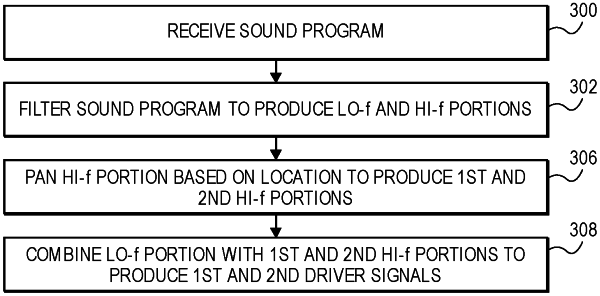| CPC H04R 5/04 (2013.01) [H04R 5/033 (2013.01); H04R 2420/01 (2013.01); H04S 7/30 (2013.01); H04S 2400/11 (2013.01); H04S 2420/01 (2013.01)] | 18 Claims |

|
1. A method for rendering a sound program for headphones, the method comprising:
determining a location for placing the sound program as being between a first ear piece and a second ear piece of the headphones;
in accordance with the determination that the location is between the first ear piece and the second ear piece:
filtering the sound program to produce a low-frequency portion and a high-frequency portion,
panning the high-frequency portion according to the location to produce a first panned high-frequency portion and a second panned high-frequency portion,
combining the low-frequency portion and the first panned high-frequency portion to produce a first in-head signal, and
combining the low-frequency portion and the second panned high-frequency portion to produce a second in-head signal;
driving the first ear piece with the first in-head signal; and
driving the second ear piece with the second in-head signal.
|